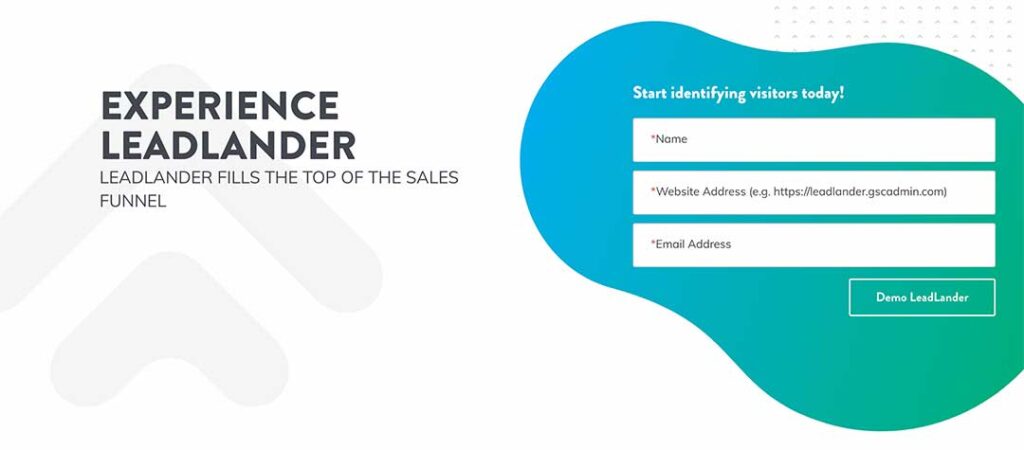The average ROI for digital marketing is 5:1. So for every $1 you spend, you’ll get back $5 on average. That makes it an extremely effective way to improve sales and grow your brand.
But when it comes to digital sales lead generation, personalization is king. And that can be tough to do if you’re not implementing marketing segmentation.
Several types of marketing segmentation are worth building into your strategy, but perhaps none is more effective than geographic segmentation.
In this article, we’ll tell you:
- What geographic segmentation is
- Why it’s important
- How to use it in your marketing campaigns
- How to generate more leads with geographic segmentation
So without further delay, let’s get into it.
A quick refresher on marketing segmentation
Just so we’re all starting on the same page, let’s briefly review marketing segmentation in general before diving into geographic segmentation specifically.
Marketing segmentation is splitting your prospective buyers into groups based on shared characteristics. There are multiple ways to do this, one of which is geographic segmentation.
What is geographic segmentation?
Geographic segmentation is a specific marketing segmentation that involves splitting your leads based on their physical locations. The idea is that people who live in the same geographic region may have similar motivations for purchasing your products.
Let’s say you run a clothing company that sells different clothing items. If you group your leads geographically, you could run targeted ads for winter gear in regions where it gets cold. But you could leave out people from warmer climates in those ads.
That’s useful because it lets you get precise with your advertisements without showing inaccurate ads to large portions of your audience. 71% of customers prefer personalized ads, so you should see an uptick in your marketing effectiveness after embracing this strategy.

Using geographic segmentation in your marketing campaigns
Here are six of the most common ways marketers group their audiences based on geography.
Timezone
Your audience’s time zone impacts their purchasing behavior differently. The most relevant way to your company will depend on its products.
For example, coffee shops may find it beneficial to run targeted ads to their customers before work or in the afternoon when people need a pick-me-up. But that wouldn’t be a factor worth considering if your company sells professional services or tools like B2B software.
Instead, your business could use timezone-based geographic segmentation to show your target audience ads at the time when you know they’re most likely to see them.
For instance, you could send out your marketing emails to East Coast leads three hours before you send them out to leads on the West Coast. This could increase your open and click-through rate because your emails will be delivered right when your leads check their inboxes, regardless of location.
Climate
Climate also impacts the types of ads you show your customers. The winter clothing example is a great instance of why a company might want to do this.
Cultural preferences
Cultural preferences and sensitivities may also need to be considered while building out your advertising campaigns: Humorous ads can be effective, but the content that gets a chuckle out of your audience in one location could be offensive to leads in another.
This type of geographic segmentation may not be as relevant to companies that only do business in the United States. But it will likely be important to global businesses.
New territory
If your company is expanding to offer its products or services in a new location, then it’s a great idea to run ads specifically targeting leads in your new territory. Delivery services do this all the time. Many will offer a special first-time customer offer to residents that can begin using the service.
Population density
For some companies, it makes sense to change marketing strategies based on whether a lead lives in a densely populated urban area or a sparse and spread-out rural one.
Urban areas tend to be more prosperous than rural ones. So you may want to market higher-value items in cities and more affordable ones in rural regions.
Zipcode
You can also get super specific and split your audience based on the zip code that they live in. This is a great way to ensure you’re showing the right products to the right leads. Income levels vary considerably from one zip code to another – even if two people live in the same area.
Let’s say you run a high-end salon in a city. Your target demographic would be households with disposable income. Using zip code-based geographic marketing, you could make sure your ads only show up for those living in wealthier parts of the city.
Sales lead generation and geographic segmentation
Now let’s consider how you might start deploying these strategies via your most popular digital marketing channels.
Geo-targeted ads on social media
97% of Fortune 500 companies rely on social media for marketing. It’s a good idea for your company to do the same since it’ll enable you to reach your target audience where they’re spending more time.
Thankfully, it’s fairly easy to deploy geo-targeted ads on social media. All of the popular platforms have this capability built into their marketing functions, including:
- TikTok
- Youtube
The process is usually pretty simple. You just choose a zip code, region, or timezone you want to target. Then you pay to show ads to those segments.
Local SEO
Search engine optimization (SEO) is how you get your products in front of consumers when they perform Google searches. That’s an important thing to do since 81% of retail shoppers do online research before purchasing.
There are two ways to rank higher on Google search results. You can do so organically with valuable keyword-rich content. Or you can pay to have your company placed at the top of a search result.
Paid SEO ads are especially effective for targeting a local audience. Say you run a chain of local seafood restaurants. When someone types “seafood near me” into Google, you can pay to have your restaurants show up first.
Thanks to geographic segmentation, you’ll be able to target this highly valuable keyword without paying to show your ad to people who aren’t going to come to visit your restaurants.
Lead generation software
You can also use lead generation software to pick up new leads based on their geographic locations.
With lead generation software like LeadLander, you can see the top areas from which people visit your website. You can use that information to make more informed decisions about reaching out to them with targeted ads through channels like email, social media, and SEO.
But the data that you gather from lead generation software can also be valuable for your organic marketing efforts.
If you know where people are visiting your website, then you can learn a lot about their preferences and purchasing goals. Use that information to push out content like blog posts, videos, and social media infographics that speak to your geographic segments more directly and more effectively.

LeadLander helps your business get more out of geographic segmentation
Geographic segmentation is an effective way to be more precise with your marketing budget. But to unlock the full potential of this strategy, you need the right data.
LeadLander helps you get that data by giving you a steady stream of information about the location of who’s visiting your website. We also tell you:
- What content they’re looking at
- Whether they’re associated with a company
- When they come back to your site
The bottom line is that you can use LeadLander to get the data you need to deploy an effective geographic segmentation strategy.
Take a look at our free demo to learn more.

Related Reading


